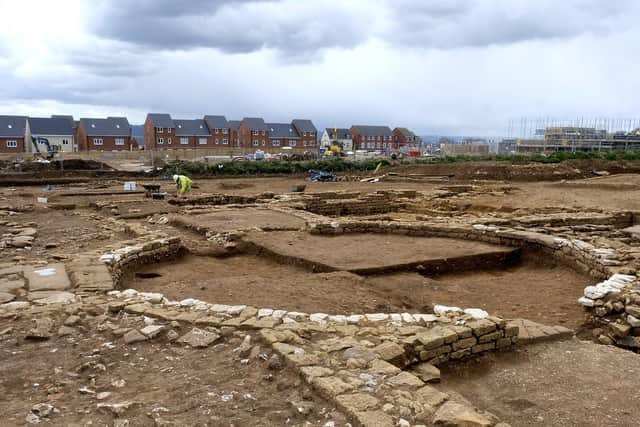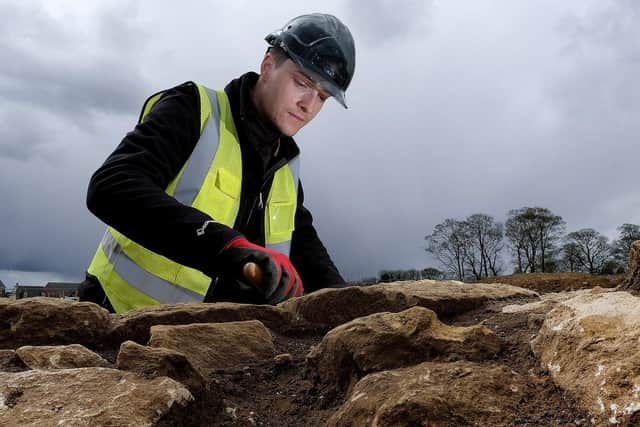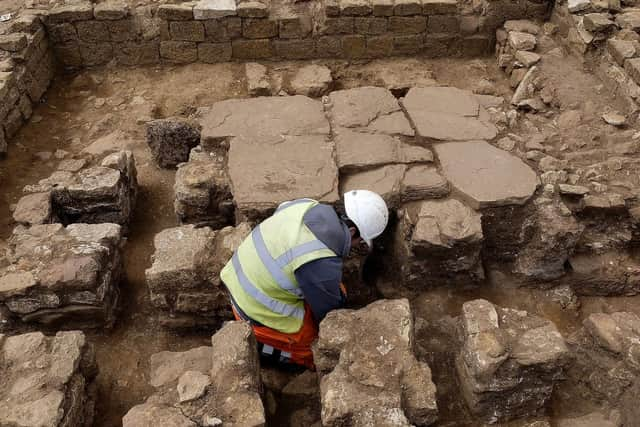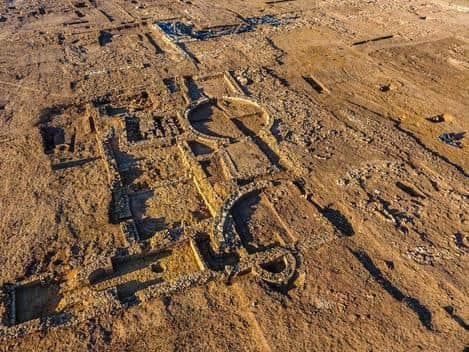More Roman ruins could be found at 'nationally important' Eastfield site as new digs set to begin
and live on Freeview channel 276
In April, archaeologists discovered significant Roman remains that have been hailed as a world-first, never having been seen before.
“We’re excavating until mid-July on this phase. There are four more phases of archaeological work to take place, including to the north of where the site is now,” said Paula Ware Managing Director at MAP Archaeology. “We would anticipate that we are going to find, maybe not the level of buildings we’ve got, but definitely more indicators of what the function of that site was during the Roman period.”
Advertisement
Hide AdAdvertisement
Hide AdMAP Archaeology is the consultancy brought in by developer Keepmoat Homes to conduct archaeological digs at the site in Eastfield.


The discovery of significant Roman ruins on the Yorkshire Coast has both excited and puzzled experts alike, in an area of Britain where the history of the Romans is not well known.
Archaeologists are reluctant to describe the site as a villa as the true purpose of the buildings currently remains unknown, but that it is unique and “really special”.
'Roman site remains a mystery'
“We really don’t know what it is at this stage, we don’t have that evidence of whether it’s a villa or a sanctuary – that’s a work in progress but as we keep excavating we hope to find that information,” Ms Ware said.


Advertisement
Hide AdAdvertisement
Hide AdEarlier phases of the discovered buildings date as far back as the 2nd Century AD, with archaeologists looking at the possibility that it had an Iron Age foundation and was adapted with the placement of Roman buildings on top.
Ms Ware said the buildings were of a sophisticated style and a high-status site.
“Our information about Romans in this part of Yorkshire is quite limited and we always knew about the rural element of it, but nothing of this scale.


Advertisement
Hide AdAdvertisement
Hide Ad“We never anticipated this at all. So it’s really changing the significance of Scarborough in terms of the Roman period.”
This Roman discovery is significant due to the unusual nature of a circular room and entrance with three square rooms adjacent, which experts have not seen before. “It’s increasing our understanding of Roman Britain, it really is significant,” said Ms Ware.
'Better than our wildest dreams'
Describing the moment she received a phone call that revealed the discovery of the Roman ruins, Ms Ware said: “Unbelievable, great excitement, I got in my car and went straight to the site to have a look, everything else was pushed aside!


“This is up there near the top, it really is quite thrilling!
Advertisement
Hide AdAdvertisement
Hide Ad“Because we’ve worked on the site for so many years; I think I first started on the site in 2009 with the trial trenching with quite a few of my colleagues who we still all work together, so for us, it’s just incredible.
“It’s even better than our wildest dreams.”
A limited number of artefacts have been discovered at the site in Eastfield, including personal adornments and ceramics. A few broaches have been found, along with shards of Roman pottery. Some amphora has been discovered, a type of container with a pointed bottom, used for the transportation of wine and olive oil.
“We have not found the huge amounts that we would normally see on a site,” said Ms Ware. “So that’s another intriguing element – was it cleared out in the fourth century, a stamping out of that site and removal of the material goods?”
The main core of the buildings will be preserved in situ, which is regarded as best practice by archaeologists. It refers to the conservation of an archaeological asset in its original location, meaning it will be reburied.
Advertisement
Hide AdAdvertisement
Hide AdMs Ware said with this site being an unexpected find and of national importance, it was especially important to protect it in this way as the stonework would soon disintegrate as the weather conditions are not ideal.
'Site will be publicly accessible'
Adam Knight, Technical Director at developer Keepmoat Homes, said: "Whether you’re into archaeology or not it’s one of those situations where you step back and you think it really is quite an exciting thing to be involved with.”
The area of land where the Roman ruins were found has been designated as a public open space, meaning that it will be able to be visited in the future.
Developers have ruled out building any houses over the top of the site, with the number of homes in that area being reduced from about 150 to 94 to accommodate the new public space.
Advertisement
Hide AdAdvertisement
Hide AdIt is not believed that Historic England is looking at tourism opportunities for the site, though no final decision has been made.
Additionally, national monument status has been applied for by Historic England to recognise the significance of the discovery in Eastfield.
Mr Knight was pleased to say that there have been no more instances of break-ins at the site. Hours after the find was first made public, trespassers damaged fencing to gain entry and damaged buildings.